Unlock the Secrets of Mount Huaguo: A Journey through Myth and Nature
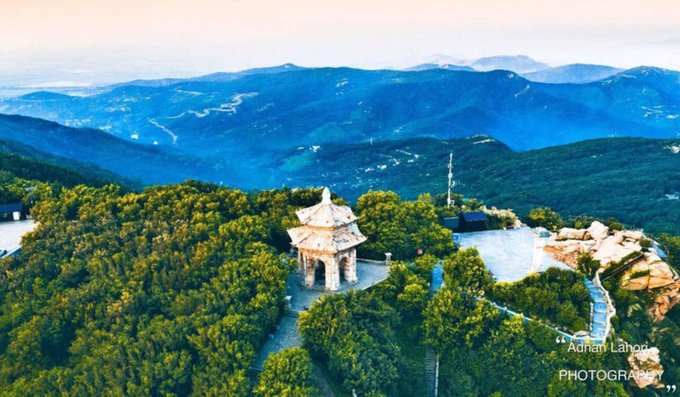
An Essential Guide to Visiting Mount Huaguo
Nestled in the picturesque Xinpu District of Lianyungang, Mount Huaguo (花果山) is not just a mountain; it’s a vibrant tapestry woven with myth, nature, and adventure. Renowned as the legendary birthplace of Sun Wukong, the Monkey King from the classic Chinese novel “Journey to the West”, this stunning peak is adorned with sacred temples, lush greenery, and, of course, its playful residents—monkeys that roam the area freely, adding a whimsical charm to your visit.
This essential guide will navigate you through the wonders of Mount Huaguo, from practical tips for getting there to insights on the best viewing spots and the must-see temples that dot the landscape. Learn about the scenic routes you can take, whether by bus or on foot, and discover the best times to visit for a truly unforgettable experience. Whether you’re seeking breathtaking views, cultural enrichment, or a unique encounter with nature, Mount Huaguo promises to be a highlight of your travels in China. Join us as we uncover the treasures of this remarkable destination!
In This Guide
- An Essential Guide to Visiting Mount Huaguo
- The Rich History and Legends of Mount Huaguo
- Main Highlights: What You Absolutely Can’t Miss
- Planning Your Visit: A Practical Guide
- Tickets: Prices, Booking, and Tips
- How to Get There: A Complete Transportation Guide
- Local Cuisine and Accommodation Nearby
- Frequently Asked Questions
- Final Thoughts on Your Trip
The Rich History and Legends of Mount Huaguo
The Enigmatic Legacy of Mount Huaguo
Mount Huaguo, known as the Flower and Fruit Mountain, is not just a stunning natural wonder situated in Lianyungang, Jiangsu Province, but also a site steeped in rich history and vibrant legends that have captured the imagination of travelers and locals alike.
A Historical Overview
The mountain has long been revered in Chinese culture, with its significance dating back to the Tang Dynasty (618-907 AD). It became a focal point for Buddhism and Taoism, attracting monks who established temples and monasteries amid its picturesque landscapes. These spiritual leaders saw the mountain as a sanctuary, a place where nature and divinity intertwined. The remnants of these ancient structures, some still standing, offer visitors a glimpse into the mountain’s historical importance.
In more recent history, Mount Huaguo gained prominence in the 20th century as a tourist destination, drawing adventurers and spiritual seekers eager to explore its beauty and tranquility. The area was developed for accessibility, allowing a broader audience to appreciate its scenic wonders, including breathtaking views, lush forests, and the intriguing monkeys that inhabit the region.
The Birthplace of Sun Wukong
Mount Huaguo is perhaps best known as the legendary birthplace of Sun Wukong, the Monkey King, a central character in the classic Chinese novel Journey to the West. As the story goes, Sun Wukong was born from a stone, and he quickly became a symbol of strength, intelligence, and rebellion. His adventures, which include gaining magical powers and defying the heavens, have made him a beloved figure in Chinese literature and folklore.
The mountain itself is filled with sites that resonate with tales of Sun Wukong’s exploits. For instance, the legendary “Monkey Rock” offers a panoramic view of the surrounding landscapes, where visitors can soak in the atmosphere that inspired countless stories. The playful monkeys that roam the area are often seen as descendants of Sun Wukong, delighting visitors and adding a touch of whimsy to the mountain’s charm.
The Legends of Flower and Fruit Mountain
In addition to its association with Sun Wukong, Mount Huaguo is steeped in various legends that highlight its mystical allure. One such tale speaks of the “Eight Immortals,” who are said to have visited the mountain and left behind traces of their presence. Each immortal represents different virtues and powers, and their stories continue to inspire those who seek enlightenment and fortune.
Another legend involves the mountain’s striking flora, particularly its vibrant flowers and fruits that bloom throughout the seasons. According to local folklore, the mountain’s name derives from these enchanting natural features, symbolizing prosperity and vitality. It is believed that those who climb the mountain and offer prayers at its temples will be blessed with good fortune and happiness.
Cultural Significance Today
Today, Mount Huaguo remains a vital cultural site, drawing thousands of visitors each year who are eager to explore its historical landmarks and soak in its legendary atmosphere. The harmonious blend of nature and spirituality continues to captivate travelers from around the globe, making it an essential stop for anyone navigating the rich cultural tapestry of China.
In conclusion, Mount Huaguo is not merely a mountain but a living repository of history, legends, and cultural significance. Whether you are a history buff, a spiritual seeker, or simply an admirer of natural beauty, this remarkable destination promises an unforgettable journey into the heart of Chinese folklore and history.
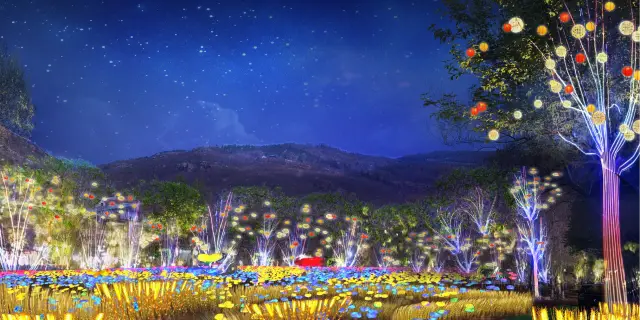
Mount Huaguo.
Main Highlights: What You Absolutely Can’t Miss
The Summit Viewpoint
At the pinnacle of Mount Huaguo lies an observation deck that promises breathtaking panoramic vistas of Lianyungang and the surrounding landscape. The journey to the top is made accessible by a short bus ride, making it suitable for travelers of varying fitness levels. Once you reach the summit, take a moment to soak in the beauty of the rolling hills and shimmering waters below. Tip: Arrive early in the morning to avoid crowds and catch the sunrise, which paints the sky in stunning hues.
Sun Wukong’s Birthplace
Famed as the legendary birthplace of the Monkey King, Sun Wukong, this area is steeped in rich cultural significance. Visit the various temples dedicated to this mythical figure, adorned with intricate carvings and beautiful architecture. The vibrant atmosphere is often enhanced by local festivities. Tip: Don’t forget to snap a photo with the iconic Monkey King statue, a favorite spot for visitors.
Monkey Rock
True to its name, Monkey Rock is a lively area where you can observe playful monkeys in their natural habitat. These cheeky creatures can be seen frolicking around, but beware— they are known to be mischievous! While watching them, keep your belongings secure to avoid any unexpected thefts. Tip: Bring some snacks to attract the monkeys for a fun photo opportunity, but make sure to keep a safe distance!
The Waterfall Cave
Take a break from your hike to explore the enchanting Waterfall Cave, a hidden gem that features a stunning waterfall cascading into a serene pool. Venture through the cave and marvel at the unique rock formations. The cool mist from the waterfall is refreshing after a hike. Tip: Wear sturdy shoes as the cave floor can be slippery. Bringing a waterproof bag for your phone will allow you to capture the beauty without worrying about splashes.
The Buddhist Temples
As you descend the mountain, make time to visit the historic Buddhist temples scattered along the trail. These peaceful sanctuaries offer a glimpse into the spiritual life of the region, with monks often found meditating in the tranquil surroundings. The architecture is both impressive and serene, perfect for a moment of reflection. Tip: Respect the local customs; silence your phone and dress modestly when entering the temples.
Scenic Walks and Trails
For those looking to immerse themselves in nature, the walking trails that wind around Mount Huaguo are a must. The paths are lined with lush vegetation and offer varying degrees of difficulty, making them suitable for both casual walkers and avid hikers. The flora and fauna along the trails provide ample opportunities for photography. Tip: Carry plenty of water and wear comfortable shoes; consider a walking stick for added support on steeper sections.
Local Cuisine at the Base
After a day of exploration, treat yourself to some local culinary delights at the base of Mount Huaguo. Restaurants here offer a variety of dishes featuring fresh, locally sourced ingredients. Savor regional specialties that highlight the flavors of Jiangsu province. Tip: Try the sweet and savory monkey bread, a local favorite, and don’t hesitate to ask for recommendations to ensure you experience authentic flavors.

Mount Huaguo.
Planning Your Visit: A Practical Guide
Best Time to Visit
The ideal time to explore Mount Huaguo (花果山) is during the spring (April to June) and autumn (September to November) months. During these seasons, temperatures are mild, and the natural scenery is at its most vibrant, with blooming flowers and colorful foliage. Summer can be hot and humid, while winter temperatures can drop significantly, making the visit less enjoyable.
Recommended Itinerary
Day 1: Arrival and Exploration
– Morning: Arrive in Lianyungang and check into your accommodation. Enjoy a hearty breakfast.
– Late Morning: Head to Mount Huaguo. Take a taxi or local bus to the entrance.
– Afternoon: Explore the area around the base, visit temples, and enjoy lunch at local eateries.
– Evening: Ascend the mountain by bus or car to the main viewing area. Enjoy sunset views and take photos. Return to the base for dinner.
Day 2: Hiking and Scenic Views
– Morning: Begin your hike early to avoid crowds. Walk down from the peak, taking time to visit significant sites along the way.
– Afternoon: Stop for a picnic lunch amidst nature or at one of the food vendors. Look out for the playful monkeys that inhabit the area!
– Late Afternoon: Take a leisurely stroll through the beautiful temples and historical sites.
– Evening: Head back to Lianyungang city for dinner and rest.
Photography Tips
- Golden Hour: Capture stunning photos during the golden hour (just after sunrise and before sunset) when the light is soft and warm.
- Wide-Angle Shots: Use a wide-angle lens to capture the breathtaking landscapes and panoramic views of the surrounding mountains.
- Monkey Encounters: If you want to photograph monkeys, use a zoom lens to keep a safe distance. They are lively and unpredictable!
- Candid Moments: Capture the essence of the place by photographing local visitors and their interactions with the environment.
- Temple Details: Don’t forget to take close-up shots of the intricate architectural details of the temples scattered across the mountain.
What to Wear
- Comfortable Footwear: Wear sturdy hiking shoes or sandals with good grip. The terrain can be rugged and uneven.
- Layered Clothing: Dress in layers to adapt to changing temperatures; mornings can be cool while afternoons may heat up.
- Sun Protection: Bring a hat, sunglasses, and sunscreen to protect against UV rays, especially if you plan on spending a lot of time outdoors.
- Rain Gear: If you’re visiting during the rainy season, pack a light rain jacket or poncho.
Insider Tips
- Start Early: Arrive at the mountain early in the day to avoid the crowds and enjoy a more peaceful experience.
- Local Transport: Use local buses for the ascent and descent to save money; they are affordable and convenient.
- Stay Hydrated: Bring a reusable water bottle and refill it at various points along the trail. Bottled water can be pricey near tourist spots.
- Monkey Caution: Be mindful of your belongings when encountering monkeys; they are known for snatching food and personal items.
- Check Schedules: Be aware of the bus and attraction closing times to avoid being stranded, particularly during off-peak seasons.
By following this guide, your visit to Mount Huaguo will be both enjoyable and memorable. Safe travels!
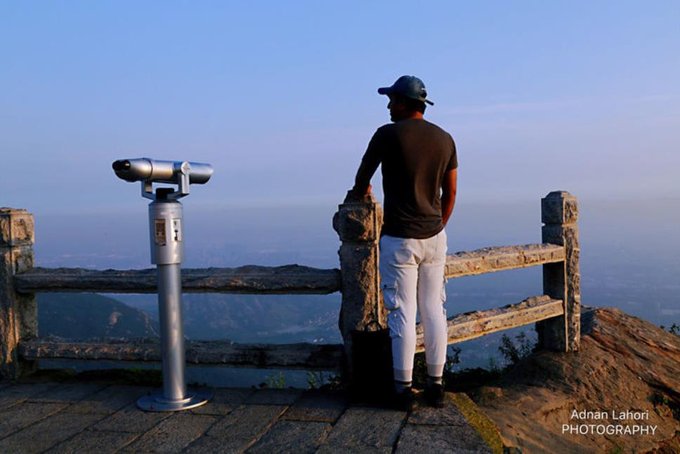
Mount Huaguo.
Tickets: Prices, Booking, and Tips
When planning your visit to Mount Huaguo (花果山), it’s essential to understand the ticketing options available to make the most of your experience. Below is a helpful overview of ticket types, prices, and what each ticket includes.
| Ticket Type | Price (CNY) | Includes |
|---|---|---|
| Standard Admission | 120 | Entry to the mountain and access to main attractions. Additional fees may apply for specific activities. |
| Bus Ticket (Round Trip) | 20 | Round trip transportation to the top of the mountain via shuttle bus. |
| Combo Ticket | 140 | Includes standard admission and round-trip bus fare. |
| Raft Ticket | 50 | Access to boat rides at the base of the mountain (subject to availability). |
Booking Information
Booking your tickets in advance is highly recommended to avoid long queues and ensure availability, especially during peak tourist seasons. Tickets can usually be purchased online through official tourism websites or at designated ticket offices in Lianyungang. Some travelers have noted that purchasing tickets in person can be less expensive, but this comes with the risk of limited availability.
Tips for a Smooth Experience
- Arrive Early: To enjoy a full day of exploration and avoid crowds, plan to arrive early in the morning.
- Transportation: If you’re not driving, consider using local taxis or rideshare apps to reach the mountain. The bus service is convenient, but be mindful of the last return times to avoid being stranded.
- Pack Essentials: Bring snacks, water (which can be purchased at vending machines), and a camera to capture the stunning views, but be cautious of the cheeky monkeys that roam the area!
- Check for Closures: Some attractions might have limited operations or be closed; check the latest updates online before your visit.
By being well-prepared and informed about ticket options, you can enhance your visit to this breathtaking destination, ensuring a memorable experience at Mount Huaguo!
How to Get There: A Complete Transportation Guide
From the Nearest Major City
Arriving in Lianyungang
Mount Huaguo is located just outside the coastal city of Lianyungang, Jiangsu Province, making it easily accessible for international travelers. The nearest major city is Nanjing, which is approximately 300 kilometers away. Here’s how to reach Lianyungang from key locations:
By Train
- From Nanjing: High-speed trains from Nanjing to Lianyungang take about 2-3 hours. Tickets generally cost between ¥80 to ¥150 (approximately $12 to $23 USD) depending on the class of the train.
- From Shanghai: You can catch a high-speed train from Shanghai to Lianyungang, which takes about 4-5 hours. Expect to pay around ¥150 to ¥300 (about $23 to $46 USD).
By Bus
- From Nanjing: Long-distance buses are available and take around 4-5 hours, with fares around ¥60 to ¥100 (about $9 to $15 USD). Buses depart from Nanjing’s main bus station frequently throughout the day.
- From Shanghai: Buses from Shanghai typically take about 6-7 hours, costing approximately ¥100 to ¥150 (roughly $15 to $23 USD).
By Car
- Renting a car is a fantastic way to explore the region at your leisure. The drive from Nanjing to Lianyungang takes about 4 hours, while the journey from Shanghai takes around 6 hours. Expect to pay around ¥400 to ¥600 (about $60 to $90 USD) for a day’s rental, excluding fuel and tolls.
Getting to Mount Huaguo
Once you arrive in Lianyungang, getting to Mount Huaguo is relatively straightforward:
By Taxi
Taxis from Lianyungang city center to the mountain typically cost around ¥50 to ¥70 (about $8 to $11 USD) and take approximately 30 minutes.
By Bus
For a more economical option, take Bus 2 from downtown Lianyungang directly to the Huaguo Mountain Scenic Area. The fare is about ¥2 (less than $0.50 USD), and the journey takes around 40 minutes.
By Private Tour or Shuttle
Numerous operators offer guided tours that include transportation to and from the mountain. Prices vary widely based on the inclusions but typically range from ¥300 to ¥600 (approximately $46 to $90 USD) per person for a full-day tour.
Getting Around the Scenic Area
Once at the Mount Huaguo Scenic Area, navigating is easy thanks to well-marked paths and various transportation options.
On Foot
The main attractions, including temples, viewing platforms, and the famous Monkey Rock, are accessible via well-maintained walking trails. Hiking enthusiasts can enjoy the scenic views while exploring the area on foot.
Shuttle Buses
For those who prefer not to walk uphill, a shuttle bus operates within the scenic area, taking visitors from the base to the upper points of interest. The fare is typically around ¥20 (about $3 USD) for a round trip.
Cable Cars
If you’re looking to save energy, consider taking the cable car to the summit. The ride offers stunning views and costs around ¥50 (approximately $8 USD) one way.
Additional Tips
- Timing: Plan your visit early in the day to avoid crowds, especially on weekends and public holidays.
- Buses: Be aware that shuttle services may have limited hours, particularly in the late afternoon, so make sure to check the schedule in advance to avoid being stranded.
- Wildlife: Keep an eye out for the cheeky monkeys that inhabit the area, but remember to keep your belongings secure to avoid any mischievous theft!
With these transportation options at your disposal, visiting Mount Huaguo can be a smooth and enjoyable experience, allowing you to focus on the breathtaking views and rich cultural history of this renowned site.
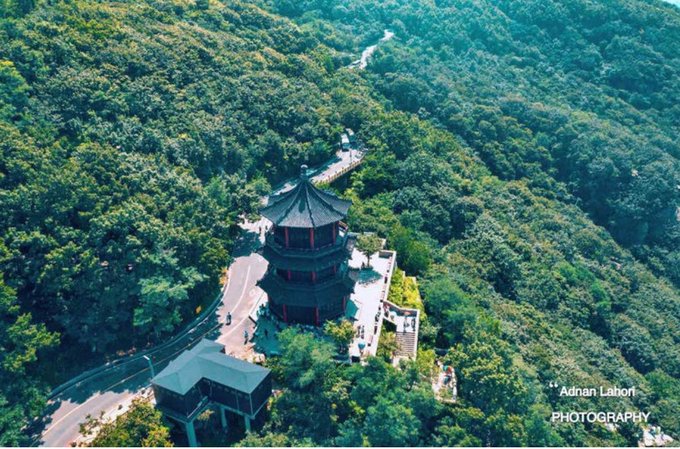
Mount Huaguo.
Local Cuisine and Accommodation Nearby
When visiting Mount Huaguo (花果山), not only will you be enchanted by the breathtaking views and historical significance of the site, but you’ll also have the opportunity to indulge in local culinary delights and find a cozy place to rest after a day of exploration.
Culinary Delights Near Mount Huaguo
-
Lianyungang Seafood: Being a coastal city, Lianyungang is renowned for its fresh seafood. Try the Steamed Crab, which is succulent and flavorful, often served with a side of vinegar for dipping. The Grilled Fish is another local favorite, seasoned with spices and herbs that enhance the natural taste of the catch.
-
Suan La Fen (酸辣粉): This spicy and sour noodle dish is a must-try for adventurous eaters. Made from sweet potato starch, the noodles are served in a tangy broth, garnished with peanuts, scallions, and a sprinkle of chili oil. It’s a perfect dish to warm you up after a day on the mountain.
-
Lianyungang Fried Rice (连云港炒饭): A comforting staple, this fried rice is often prepared with local vegetables and seafood, giving it a unique twist. It’s a hearty option that makes for a satisfying meal after your hike.
-
Buddhist Vegetarian Cuisine: While exploring the temples, consider sampling some vegetarian dishes that are traditionally served in Buddhist monasteries. Dishes like Braised Tofu with Mushrooms or Stir-Fried Seasonal Vegetables are not only delicious but also reflect the region’s rich cultural heritage.
Accommodation Options
-
Luxury Stay: Lianyungang Huaguoshan Hotel
Located conveniently near the mountain, this hotel offers breathtaking views and luxurious amenities. Guests can enjoy spacious rooms, an on-site restaurant serving exquisite local cuisine, and easy access to hiking trails. Perfect for those who want to indulge in comfort after a day of adventure. -
Boutique Experience: Huaguo Mountain Boutique Hotel
This charming hotel combines traditional decor with modern comforts. With personalized service and unique room designs, it’s an ideal spot for travelers looking for a more intimate experience. The hotel also features a quaint café where you can enjoy local snacks and drinks. -
Budget-Friendly: Lianyungang Youth Hostel
For the budget-conscious traveler, this hostel offers dormitory-style accommodations with shared facilities. It’s a great place to meet fellow adventurers and share stories of your experiences at Mount Huaguo. The hostel is close to local eateries, making it easy to grab a meal after a day of exploring.
Whether you’re savoring the local dishes or unwinding in a comfortable bed, the area around Mount Huaguo offers a delightful blend of culinary and accommodation experiences. Enjoy your adventure!
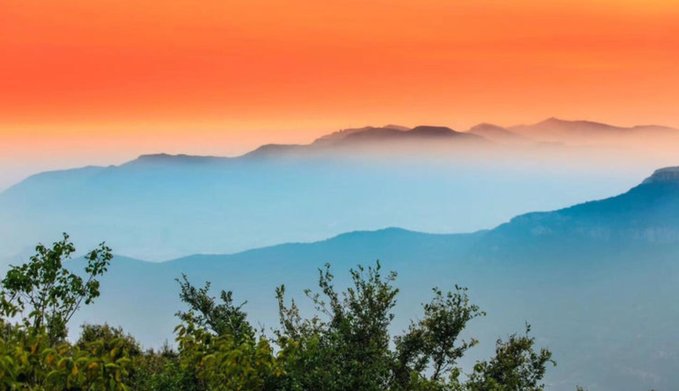
Mount Huaguo.
Frequently Asked Questions
What is the best time to visit Mount Huaguo?
The ideal time to visit Mount Huaguo is during spring (April to June) or autumn (September to November) when the weather is mild and comfortable. Summer can be hot and crowded, while winter may bring cold temperatures and snow.
Is Mount Huaguo suitable for children and the elderly?
Yes, Mount Huaguo is generally suitable for children and the elderly. There are options to drive or take a minibus to the upper areas, making it accessible for those who may have difficulty with strenuous hikes. However, some walking is required, so be mindful of your group’s fitness levels.
Are there English signs and guides available?
While some signs are in English, many are primarily in Chinese. Having a translation app or hiring a local English-speaking guide can enhance your experience and help you navigate the area more easily.
How much time should I plan for my visit?
Plan for at least 3 to 4 hours to fully enjoy Mount Huaguo. This allows time to travel to the top, explore the temples, enjoy the views, and take a leisurely walk back down. If you wish to participate in additional activities, such as tubing down the river, consider adding more time.
What is the entrance fee and are there additional costs?
The entrance fee is approximately 140 yuan, which includes bus transportation to the top. Additional costs may include snacks, drinks, and any optional activities like tubing. It’s advisable to bring some cash for convenience.
Are there facilities like restrooms and food vendors?
Yes, there are restrooms available at various points throughout the park, and you’ll find food vendors selling snacks and drinks, including bottled water. Prices are generally reasonable, with bottled water costing around 5 yuan.
What should I wear and bring during my visit?
Wear comfortable walking shoes and dress in layers, as temperatures can change throughout the day. Don’t forget sunscreen, a hat, and a small backpack for water and snacks. If you’re planning to hike, trekking poles can also be helpful.
What wildlife can I expect to see?
Mount Huaguo is home to a variety of wildlife, including a notable population of monkeys. While they can be entertaining, be cautious and avoid feeding them, as they may become aggressive if they feel threatened or if food is involved.
Final Thoughts on Your Trip
As your journey at Mount Huaguo comes to a close, take a moment to reflect on the unique experiences this enchanting destination has offered. From the breathtaking views at the summit to the playful monkeys that inhabit the lush surroundings, your visit has undoubtedly been a delightful blend of nature and culture. The ancient temples and stunning landscapes provide a serene backdrop, inviting you to connect with the rich history and folklore that this mountain embodies—most notably as the legendary birthplace of Sun Wukong, the Monkey King.
Whether you ventured to the peak by bus or enjoyed a leisurely stroll down its scenic trails, Mount Huaguo promises memories that will linger long after you’ve left its heights. As you depart Lianyungang, carry with you not just photographs, but a sense of adventure and wonder. Embrace the spirit of exploration, and remember that the world is full of remarkable places waiting to be discovered. Safe travels on your next adventure!